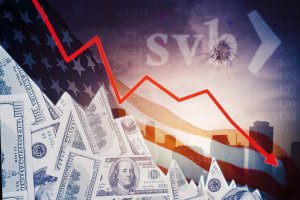Historically novel events cause the processes driving stock market returns to change in unforeseeable ways. This kind of instability famously eludes representation in terms of standard probability theory, which relies on past data. To deal with so-called “radical” or “Knightian” uncertainty, market participants rely on narrative dynamics to help give shape and contextual meaning to novel events as relationships change in real-time.
This is the essence of the Novelty-Narrative Hypothesis (NNH) that I assess in my new book, How Novelty and Narratives Drive the Stock Market: Black Swans, Animal Spirits and Scapegoats published as part of INET’s book series with Cambridge University Press. This new approach enables researchers, policy-makers, and investors alike to better understand stock market outcomes and confront unforeseeable change and the Knightian uncertainty it engenders with real-world observations and scientific scrutiny. Standard economics relies on probabilistic rules which presume that the future is an exact replica of the past and, as such, is unable to deal with “true” uncertainty. NNH offers a way forward.
Why is change in stock market relationships unforeseeable? Frank Knight famously traced the answer to events that are to some extent historically unique. The last two years perfectly illustrate Knight’s point. Financial markets have had to grapple with an unprecedented pandemic, historic US Congressional stimulus, dramatic supply chain disruptions, and sharp pivots toward more remote forms of both labor and commerce. Simultaneously, there has been an oil war between Saudi Arabia and Russia, the arrival of a new US presidential administration, shifting geopolitical conflicts in the Middle East, and, now, substantive talk of Federal Reserve tapering in the face of creeping inflation. Such events catalyze change in business processes and in the economy’s overall structure. Yet, true uncertainty implies that no one can foresee when such events would occur or, more importantly, how their impacts on future returns are interpreted by market participants at a given point in time.
My book offers the first comprehensive analysis of the role that stories play when novel events cause instability in the stock market. Stories are visceral, contagious, and ever-evolving. Stories share a living symbiotic relationship with the people and communities that tell them. Stories reflect a society’s culture, values, institutions, experiences, diversity, and politics. Stories are the consequence of uncertainty, but also serve as a source of uncertainty themselves. Stories are the currency of uncertainty. People tell stories that others have told them and major events are often the catalysts for many of the most popular story threads coursing through our minds, discussions, news reports, business communications, and social media feeds.
Macro shocks, however, do not occur in isolation. Rather, large-scale non-repetitive events often spill over into a churning stream of novelty at the firm level, think bankruptcies, management shake-ups, legal issues, M&As, new production processes, and so on. What’s more, the interpreted impacts of macro shocks on firm outcomes may be quite ambiguous; often, the distinction lies with short- versus longer-run return forecasts and the accompanying narrative links versus established story threads, respectively.
My book relies on a novel dataset based on millions of identified unscheduled corporate events across the universe of Dow Jones, Wall Street Journal, MarketWatch, and Barron’s financial news reports over the last two decades. I assess the intensity of narrative dynamics through big data analysis of event novelty, inertia, sentiment, and relevance. These metrics are then interacted to show how narrative intensity aligns with formal structural breaks in posited relationships driving returns, volatility, and fund flows. Interestingly, the narrative dynamics of firm-level events correspond rather closely with macro event narratives. But the empirical evidence shows that macro unscheduled events spill over onto future corporate novelty triggering different forms of stock market instability.
Narrative economics is a popular and growing field of research. Unlike other treatments of narrative dynamics in the stock market, my book places psychology in a rational setting of cognitive decision-making under uncertainty. Evidence from other social sciences supporting a rational view of sentiment is overwhelming. What’s more, my book does not trace the source of narrative dynamics to random chance, evolutionary biology, or psychological disorders, as others have contended. Rather, NNH implies that narrative dynamics stem from historically unique events and the unforeseeable structural change they engender in stock market relationships. Put differently, my book advances the view that the role of novelty and narratives reflects the normal state of affairs in inherently unstable asset markets. Consequently, my book breaks away from mechanistic models of contagion used to describe narratives’ impact on market outcomes.
The missing link to deal with inherent instability and uncertainty is narrative dynamics. Story threads are the primary source of soft information for researchers, policy-makers, regulators, and market participants alike. This year, we are witnessing an evolving interplay between the narratives of inflation pressures and narratives following Chair Powell and the Federal Open Market Committee. Yields on 10-year Treasury Notes increased from 1% in February 2021 to over 1.5% through June. Google Trends searches for “Jerome Powell” spiked in March as yields increased. Google Trends searches for “inflation” began to rise in April 2021 and peaked in May. There appears a connection between the stories individuals are participating in and the outcomes observed in financial markets.
In March of 2021, billionaire investor Ray Dalio claimed that “investing in bonds has become stupid.” He has publicly reiterated this view on September 21 which prompted the following Bloomberg News interview query posed to Michelle Seitz, CEO of Russell Investments: “A very common theme here has been ‘don’t buy bonds’ ever since Ray Dalio said it (again this morning) and you have said the same. So where do you go?” Are narrative dynamics at play here? Was there an underlying market event that aligned with the timing of the comments? Was Dalio or Seitz providing a narrative link that extends an established story thread or were they cultivating a new narrative angle? Narrative analytics would explore the emotional intensity of the surrounding linguistic context. It would track the stories’ visibility and mileage observed by the general public and by financial institutions. Narrative analytics would investigate the possible contagion and propagation of the view by other major investment figures and personalities. And, narrative analytics would always keep in mind the time-series behaviors of these metrics and their interaction as many other events unfold simultaneously.
The toolkit under NNH can be used in myriad ways by researchers and policy-makers for informing financial market decisions under uncertainty. For example, investigators might consider tracking the narrative attributes surrounding unscheduled events mentioned in 10-K and 8-K corporate statements, IPO prospecti, or in the SEC disclosures of Venture Capital firms. By tracking the way CEOs and other executives discuss particular issues on their shareholder calls or through other investor relations, dynamics of firm-level and industry narratives could be revealed. Which subsets of soft information are they emphasizing? How are they framing the soft information? NNH offers an empirical, pragmatic framework for addressing these questions and many more.






